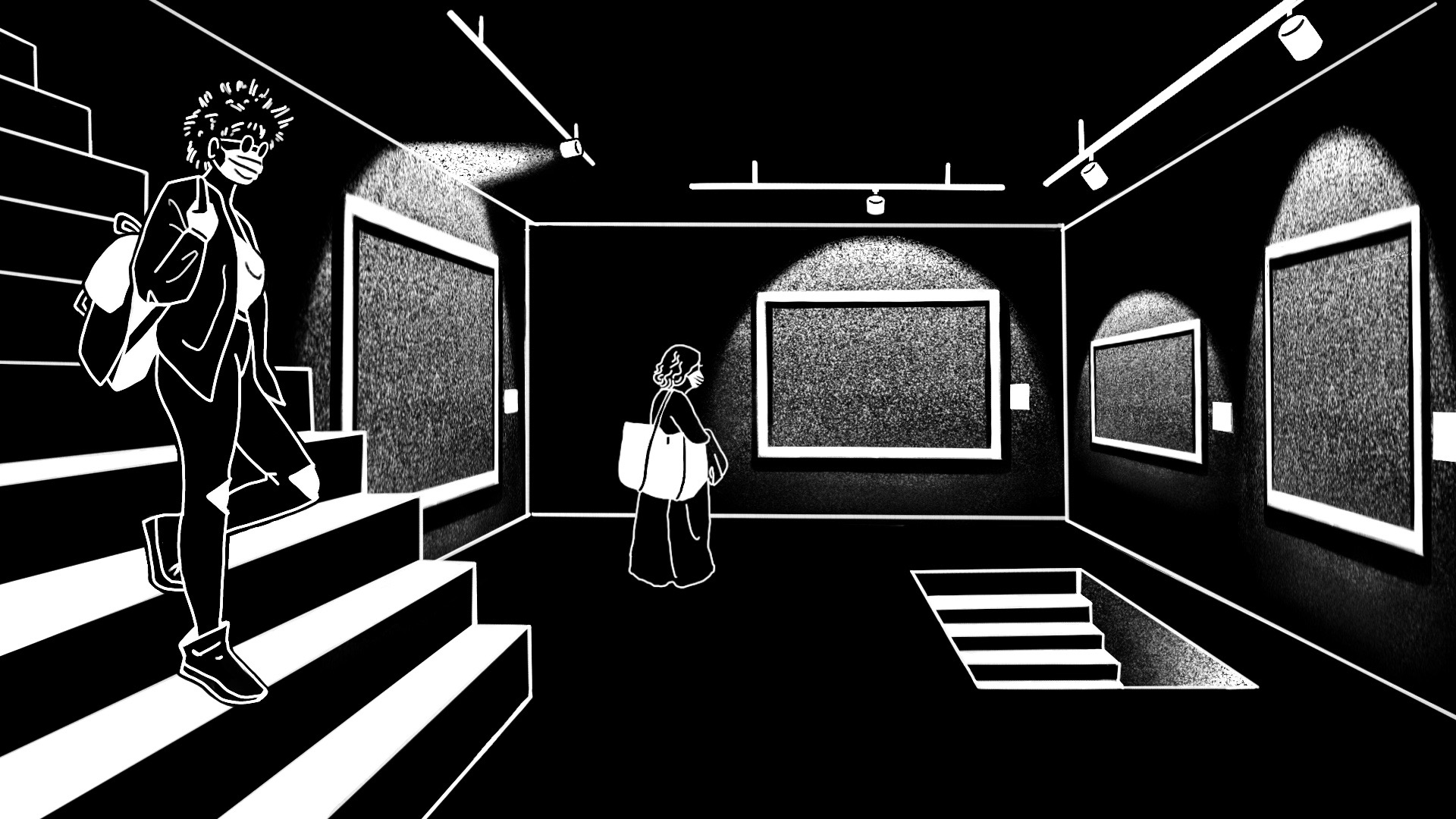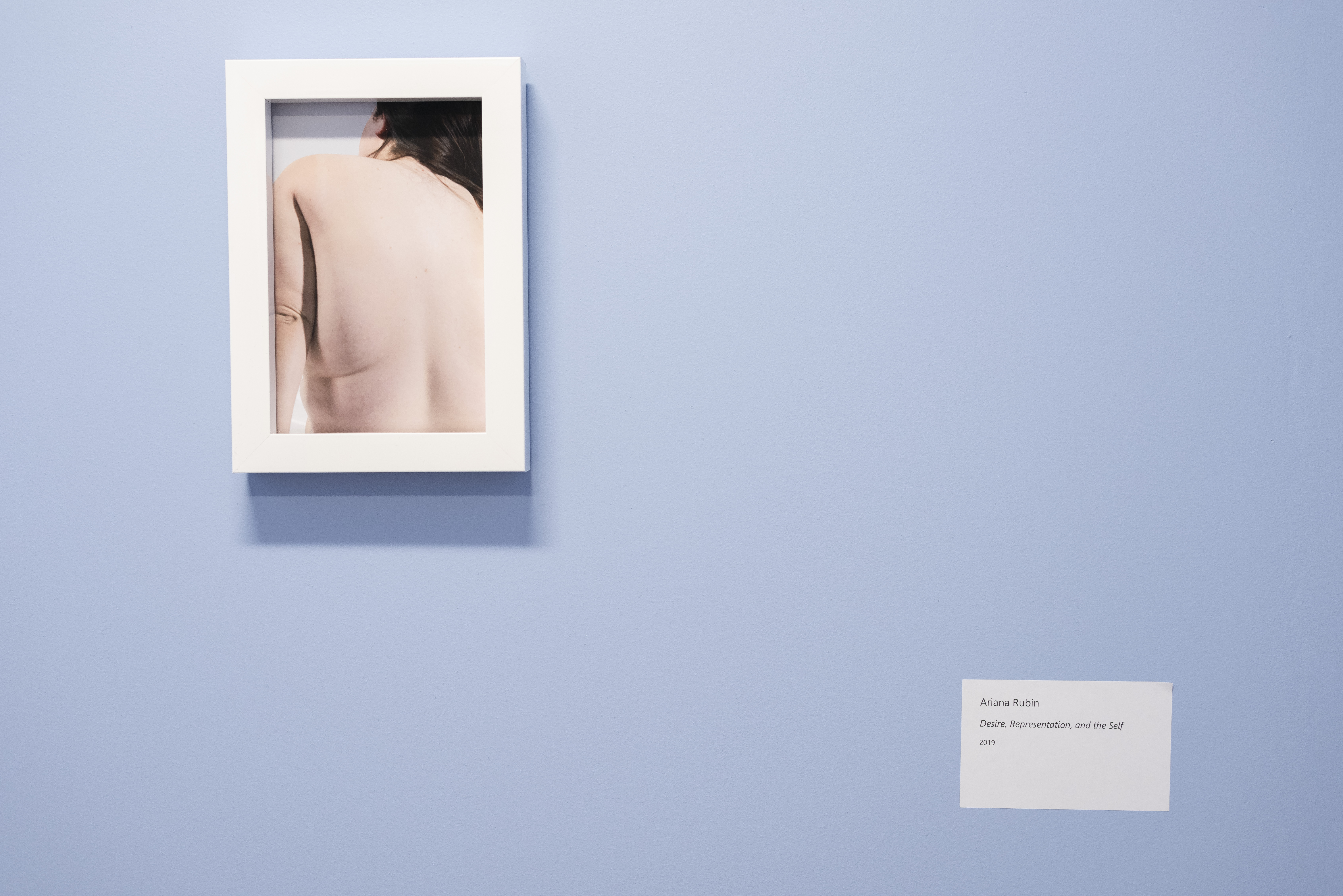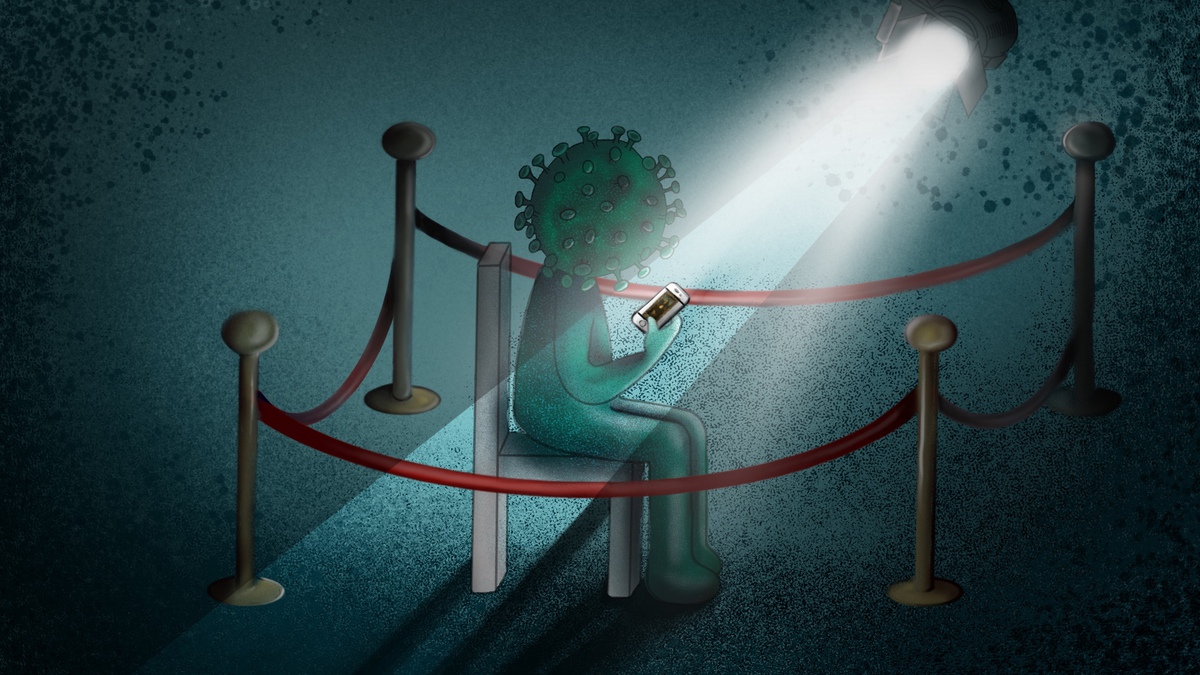After 12 years of being the largest academic gallery in downtown Chicago, Sullivan Galleries is moving on to a new chapter. Now officially named “SAIC Galleries,” it is going underground to a brand-new space. In February, SAIC announced the plan to move the galleries, Exhibitions Department offices, and graduate student studios from the Sullivan Center to a new location at 33 East Washington Street. Back in March, the mission to pack up and move the large gallery operations during a global pandemic seemed impossible. Four months later, the Exhibitions Department began the moving process with minimal staff. By the end of August, the Sullivan Galleries became history.
The new space, which is custom-designed and leased by SAIC, consists of four stories, 24,000 square feet of exhibition space, 60 graduate studio spaces, and Exhibitions Department office space. While there is no natural light due to the space’s underground location, staff now have more control over lighting and video projection. The galleries will continue to utilize super energy-saving LED light bulbs to conserve energy.
Trevor Martin, Executive Director of Exhibitions, said that the process took a year of working closely with architects and colleagues from Instructional Resources and Facilities Management (IRFM), looking at floor plans, and envisioning how the new space will best fit exhibition needs.
“We spent twelve years at the last space, and we were still making adjustments on how to best utilize the exhibition areas. We are always learning more about the space as we go,” Martin said in an interview with F News.
Although the new galleries have less square footage, they still have the same total length of wall space as the Sullivan Galleries did. Additionally, the division of floors allows discrete entrances to the various gallery spaces and a clear separation between exhibitions on view and others that may be in the middle of installation — helping refine viewers’ experience.
During a pandemic, moving over a decade’s worth of accumulated supplies and tools proved to be a huge operation, said Martin. COVID-19 was an unavoidable topic when mentioning the challenges and planning for the upcoming semester. Due to the early shutdown, all spring and summer exhibitions were indefinitely postponed. Martin explained the challenge of having artwork shipped from outside of Chicago: “We had no idea when art shippers were going to start operating again.”
Martin emphasized that “the priority for fall is to give students and recent alumni the opportunity to show their works.” SAIC Galleries has postponed all special non-student exhibitions, including the one for faculty who have returned from sabbatical this fall. The Exhibitions Department is focusing on “Launch” and fall BFA thesis shows. With over 80 applicants, the Launch exhibition will be a celebration of the new SAIC Galleries and the recent MFA and graduate design and architecture students from the class of 2020.
Sullivan Galleries has been the creative face of SAIC, and is also closely connected to Chicago’s art community, where it has taken a huge hit due to COVID-19. With the elimination of interactive work and large-scale performance events, the Exhibitions Department provided a creative solution for the upcoming New Blood Festival in November: Applications will be open to all SAIC students and selected artists will perform in the window exhibition spaces on the street level of the Sharp Building and SAIC Galleries. Only one artist at a time will be allowed to be in the window space. Without sound or interaction, the performances require a different mode of communication, since the viewer will only be looking through window glass from the street. This challenges the artists to create a unique dialogue for the performance.
As Martin noted: “Everyone is getting tired of Zoom. With very limited resources and staff we are trying to make the best possible.”
The production will be in collaboration with Links Hall, a recurring partner for promotion and production of New Blood. Martin said there will still be collaborative projects with Links Hall and Illinois Humanities.
“It’s all tied together,” Martin said. “The Chicago art scene is very good about supporting each other.” Martin noted that the goal for “the official and unofficial partnerships; the art network and art friendships is to support an important ongoing dialogue. We all want the arts in Chicago and for Chicago to succeed.”
The galleries will no longer accept walk-in visitors this semester. To encourage social distancing, all visitors, including the public, SAIC students, faculty and staff must make appointments to enter the space. This policy also applies to artists during installation, documentation, and de-installation. No large public receptions will be held where the space will risk meeting its capacity. Just like every other department at SAIC, the Exhibitions Department has to adapt and survive under the pandemic and institutional budget cuts.
Senior Exhibition Manager Michael Hall addressed the issue of budget and reduced staff in an interview: “We are going to heavily rely on student workers to operate the gallery.” In order to do so, the Exhibitions Department is taking precautions. Hall, who directly works with all the student workers, explained the department’s plan to keep student workers healthy and safe. “We will be assigning face shields, face masks to each student worker and providing reusable and disposable gloves if needed for art handling and installation projects.” He also noted that the art handling process will be a challenging task for both staff and exhibiting artists.
In order to adapt and make adjustments to the current situation, Hall stressed the importance of an open dialogue among staff and student workers. When asked about concerns to keep both visitors and guests safe, Hall said, “I have faith our community is one that is especially cautious about the community responsibility because ultimately it is up to the entire community to follow the ‘best practices.’”
While contingency plans are being updated for the fall semester, uncertainty remains. On Aug. 21, SAIC’s Case Management team sent an email notifying the community of a confirmed case of COVID-19 in the new 33 East Washington facility. This raised alarm and concern among staff and students of SAIC.
Student worker Frankie Spear voiced their concerns in an interview: “When we were working in the new space, most contractors that have been walking around the gallery do not wear masks,” Frankie said, adding that this made them uncomfortable.
Considering the SAIC Galleries opening to the public, Spear also expressed that they have many concerns about maintaining social distancing and taking precautionary measures. Spear cited the struggle as a student worker trying to receive paid sick leave and the lack of medical and health insurance support for part-time staff.
This is not the only existing concern. Spear also reflected on the communication barriers in this institution. “I don’t know who to go to, to address the concern. My boss? My boss’s boss? Or even higher? Even if I do, there’s never a follow up. I feel like talking to a brick wall. I’m concerned about staff, students, and everyone who attends SAIC who might potentially be exposed to COVID-19.”
The spring BFA thesis exhibition was closed two days after the opening due to the campus shutdown in March. Both the BFA and MFA thesis shows were transferred to an online platform. Due to the uncertainty of the fall semester, while planning and preparing for in-person exhibitions this fall, Martin stressed that the Exhibitions Department is also simultaneously making a contingency plan for an online exhibition.
“This is a difficult year we are going into, and it will take several years to get out of it,” said Martin. While it remains a challenge to find the perfect solution to keep everyone safe and satisfied, gallery staff are working hard to find the best “new normal” viewing experience for the upcoming semesters.






















